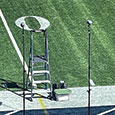COVID-19 has dramatically transformed the musical world – seemingly overnight! All concert halls and theatres are now closed until further notice, and musicians suddenly find ourselves strangely isolated from each other for the foreseeable future. There is no precedent for anything similar in our lifetimes – every one of us is learning how to best cope with the challenges this unexpected turn of events has rapidly brought to our lives.
For most of us, there are pressing practical issues which need immediate solutions. These might include securing finances, arranging help with groceries and everyday needs, or as the case may be, learning to effectively homeschool our children while simultaneously trying to carry on working remotely – and the list could go on and on. Depending on your current situation under self-quarantine and social distancing, you are in one of two scenarios: you may have much less time on your hands for practice or on the contrary, your available working hours might just have increased dramatically.
For those of you, who fall in the first category, I advise taking a look at my recent article My Practice Laboratory in the 2019 December issue of Flute Talk, where I summarize and share my methodology which I developed for maintaining an effective practice routine that allows me to stay fit on my instrument even when I have little time to practice.
In this article, I will outline some thoughts for those who have the opportunity to concern themselves with music at this time. Hopefully, some of the summarized ideas can serve as an inspiration to keep practicing and may be thought-provoking and inspiring for building a personal flautastic action plan of your own. I would like to suggest an array of activities for you to pick from, depending on your goals and the amount of time available to you, with or without your instrument at hand. All activities can be creatively adjusted to fit around your daily schedule and can hopefully serve as a meaningful reference point, a source of security and most of all, positivity. The cultural industry may be a sector that is hit extremely harshly by the current turn of events, but at least by being a performing artist, we are provided with the opportunity to access an imaginary world through music making that can be an extraordinary source of motivation and a valuable platform for growth, which, in strange times like this, is a huge mentally beneficial privilege.
Take A Step By Step Approach
Creating and maintaining a routine and daily schedule is a critical part of your mental and physical wellbeing during these uncertain times. Begin your daily schedule first by listing all your everyday duties along with any other time constraints you may have, i.e. video conference calls or family commitments. You can then identify the time slots available for concentrated work and discovering new territories. It might not always be possible to follow your plan precisely, but its presence will help encourage you to work productively and create a sense of safety and structure.
Before I delve into further discussion, I would like to highlight an important issue: it is essential that you implement any alteration to your daily practice routine gradually. Carefully reflect on any changes experienced and always take a step by step approach. Suddenly extending the amount of daily playing time or focusing on technical problems for an extensive period, however beneficial it may seem at first, can easily result in injuries or facilitate the build-up of extra physical tension. Steven Isserlis, the prominent British cellist wrote an excellent and humorous summary of his edificatory experiences about this topic in a Facebook post on March 30, 2020. Here is a little snippet from his article: “I remember that one summer when I was a teenager, I was seized with some sort of mania and started to ‘work on my technique’ for seven hours a day (the only time I’ve ever practised that much). The result was that my technique got considerably worse in quite a short time.” I strongly encourage you to keep Isserlis’s anecdote in mind when composing your daily and weekly plan for learning and practice.
I would suggest that before extending your actual playing time, first add sessions that focus on improving your overall fitness for flute playing. Next, use your additional time to expand your current musical knowledge, and finally, if you are aiming for, or are pursuing a professional career in music, work on updating any professional materials, especially focusing on online content. (These will be remarkably useful later on when the classical music market gradually reopens.)
Three Territories To Explore Without Having Your Instrument At Hands
1. Move with Intention
First, it is wise to add some deliberate extra movement to your days. There are plenty of outstanding YouTube channels that offer every possible type of exercise class that you may desire, and these are fantastic for keeping moving. But there are other forms of movements which are specifically targeted at, or useful for musicians that I suggest you check out in addition to just keeping fit. If you are able to get hold of the excellent book, Fit for the Flute by Barbara Gisler-Haase (Universal Edition, 2000, in German), you will find that it has a great 45-minute sequence of suggested Feldenkrais exercise as well as useful gymnastic warm-up movements selected especially flutists. These are particularly beneficial if you are experiencing any pain or tension. You might also be interested in exploring the Alexander Technique, which helps improve posture and habits in movement and while playing an instrument. Another good online option is the service provided by Irish flutist, Niall O’Riordan. He is hosting live-guided Feldenkrais sessions, aiming at increasing awareness of your movement and breathing, helping relaxation and tension release specifically for flutists from across the world. Any of these activities will be beneficial to your general health and playing.
2. Expand Your Knowledge
Whenever there is time on your hands, use it to broaden your general knowledge in classical music and flute repertoire. The best way to start is by listening to a great amount of music. In addition to the usual online resources, considering the special circumstances of the current global situation, numerous orchestras and concert halls have made their archives available to all listeners for a period of time. It is an incredibly precious gift for both music lovers and professionals. Hearing, and or watching great performances will not only lift your spirits but by listening to these artists, you can continuously learn about phrasing, interpretation or articulation and your sense and understanding of style will improve immensely.
Just as important as listening to recordings, is developing your understanding of flute playing or classical music in general. Areas to explore might include relevant musical periods, the language of a specific composer, ornamentation or technical questions concerning the flute. The propagation of doctoral courses for performers in the past decade has resulted in an explosion of scholarly materials created not only by musicologists, but by practicing musicians. Many of these writings summarize valuable information about creative artistic processes and share practical knowledge of a specific area of classical music, or flute playing. The majority of the above-mentioned materials are easily accessible online and may provide eye opening information, which can inspire you to embark on your own personal journey to find a unique artistic project or theme to discover. Your research and reading now will be perfect launch material for future upcoming recitals and/or scholarly writings, such as articles, academic texts.
3. Build Your Online Presence
The last field to explore, still without an instrument in your hands, is your personal online presence. The current situation has further highlighted the value and importance of relevant online content. If you are a professional, or aiming for a professional career in flute playing, this might be a brilliant opportunity to take some time and update your materials and create proper online availability for them. You should make sure that you have up-to-date C.V. and a website, a YouTube channel, and if you prefer, a Facebook and Instagram account. There are numerous available online tools that you can learn quickly, without much tech skills, that will help you build your own online platform. On top of these, extra time on your hands may allow you to experiment with writing a blog on music related subjects – an output that is increasingly expected of performing artists and teachers. If you are active in another profession, you may write about the importance of music in your life – available online material about an additional skill in your portfolio could also be useful for future reference. Make sure that all materials you create are carefully prepared and represent your activities, knowledge and thoughts with the highest standards.

Three Practice Tips
After exploring the territories above, let’s take a look at beneficial ways to further cultivate your active, instrument-led practice and learning journey, taking into consideration that at the moment there isn’t a possibility to connect to other musicians and/or a teacher in person.
1. Take Your Time
First and foremost, I suggest that you take advantage of having more time by approaching your craft in a more relaxed way. It may be extraordinarily liberating not to have the usual time-pressures associated with making music, but have the opportunity to warm up in peace, devote enough time for relaxation between practice sessions and be able to inspect scores more in detail. It is always a great investment to spend more energy on exploring the foundation of sound production, try using a variety of exercises from De la Sonorité and 24 Little Melodic Studies by Marcel Moyse and by spending a generous amount of time on scales.
2. Prepare Comprehensively
Following this, use your extra time to properly prepare yourself for the practice of performance pieces by adding an etude or two into your daily practice. If you are unsure of what studies might inspire you, I suggest checking out the ‘Graded list of flute Etudes’ on Jennifer Cluff’s website, which collects numerous study books ordered by difficulty. When you are done with all of these and have looked at your current piece as well, I advise revisiting some of the core repertoire pieces. For example, going through each of the J.S. Bach Sonatas, and not only studying the flute part, but seriously working out the interpretation of the left, and if appropriate, the right hands of the keyboard score. It is similarly useful to learn the orchestral parts of cornerstone pieces, such as the Mozart Concerti.
3. Utilize Digital Tools
Apart from traditional and offline methods, now is probably the time to profit from the facilities of our electronic devices and all sorts of online platforms. If you have a smartphone, record a performance of yourself which will enable you to hear your playing more or less like a listener. It can be insightful to hear how much of your intended phrasing, dynamics and articulation come through on the recording; how rhythmical and in-tune everything sounds. If you are looking for additional feedback or support, share your recording with colleagues and ask for their advice by joining and posting your clip on ‘Etude of the Week’, a Facebook group which brings flutists together from all levels and nationalities. During COVID times, all members are welcome to share anything they are currently working on. It is a beautiful platform and supporting network!
Last, but not least, don’t forget that this may be the perfect chance to learn from a flutist that you admire the most. As even the busiest performers and professors are now glued to their homes, many of them are sharing tutorials on their YouTube channels or Facebook pages (a great example is the L.I.P. Project of Emily Beynon on YouTube, or the series of short tutorial videos of Paul Edmund-Davies on Facebook). Many of your beloved artists will also now be free and happy to offer online lessons, which may just be the chance that you have been waiting for in the past years.
I wish all of you good health and spirits in these probing times and hope that you will enjoy some of these suggestions. Please feel free to get in touch through www.noemigyori.com, should you have any questions.

.jpg)





